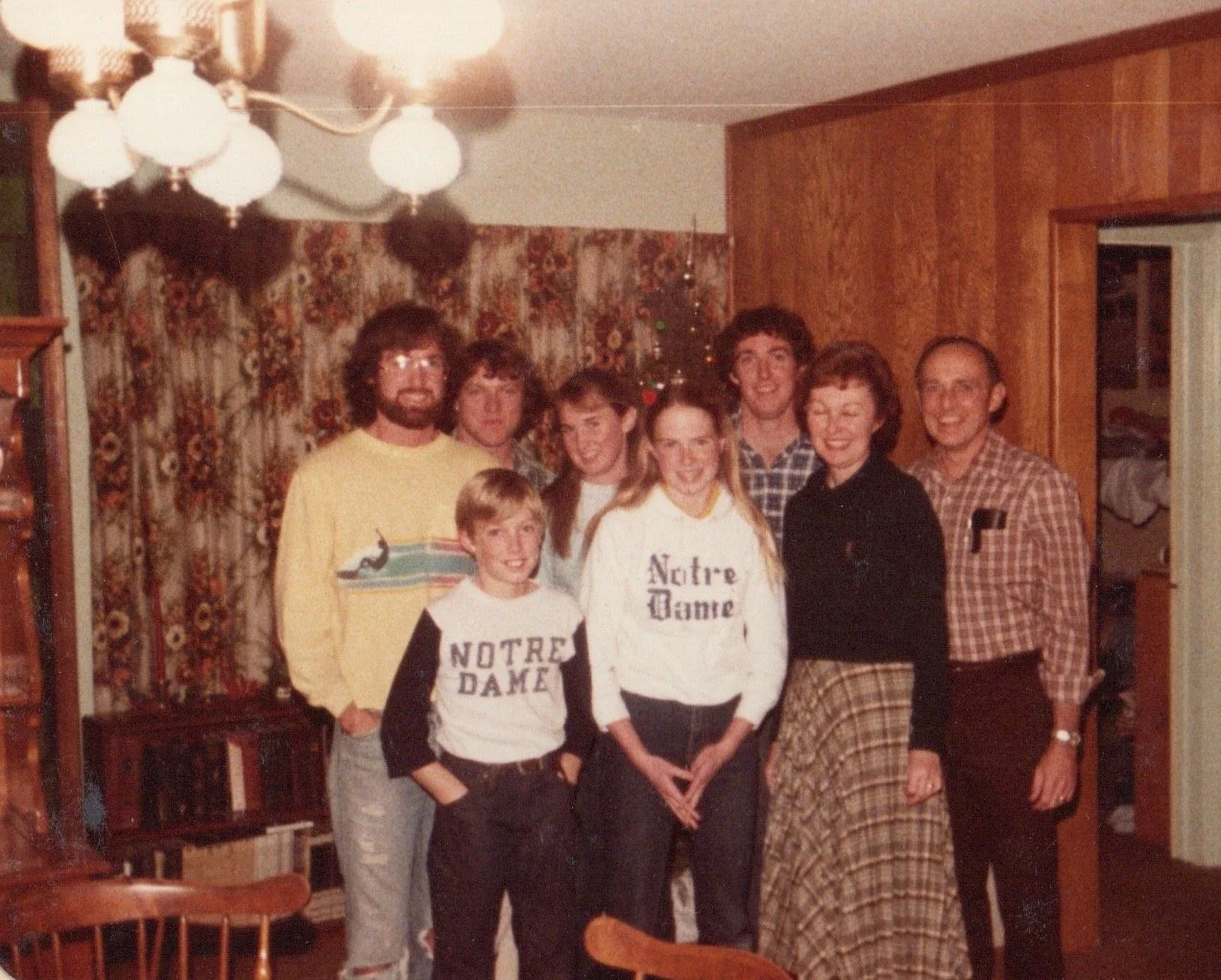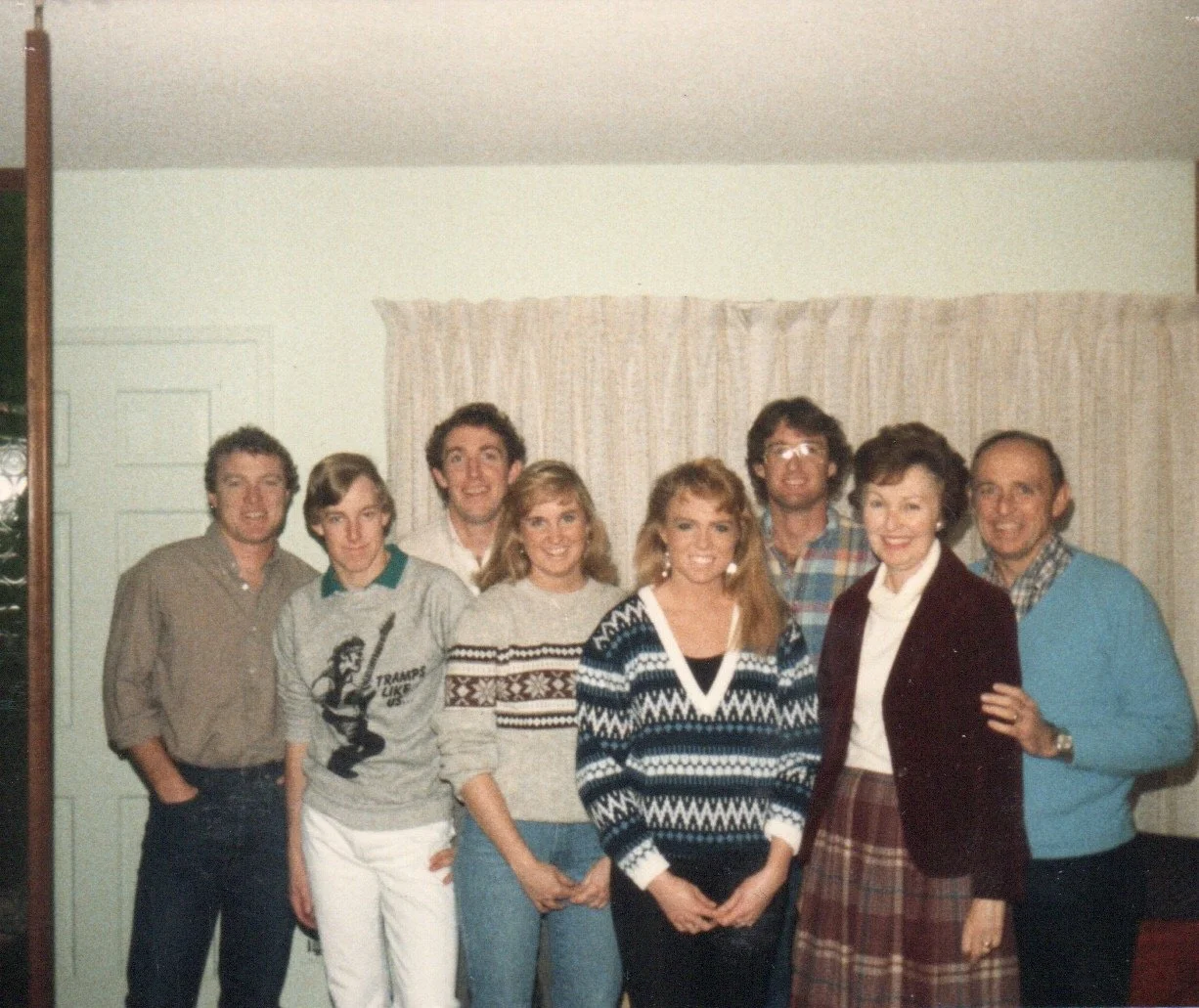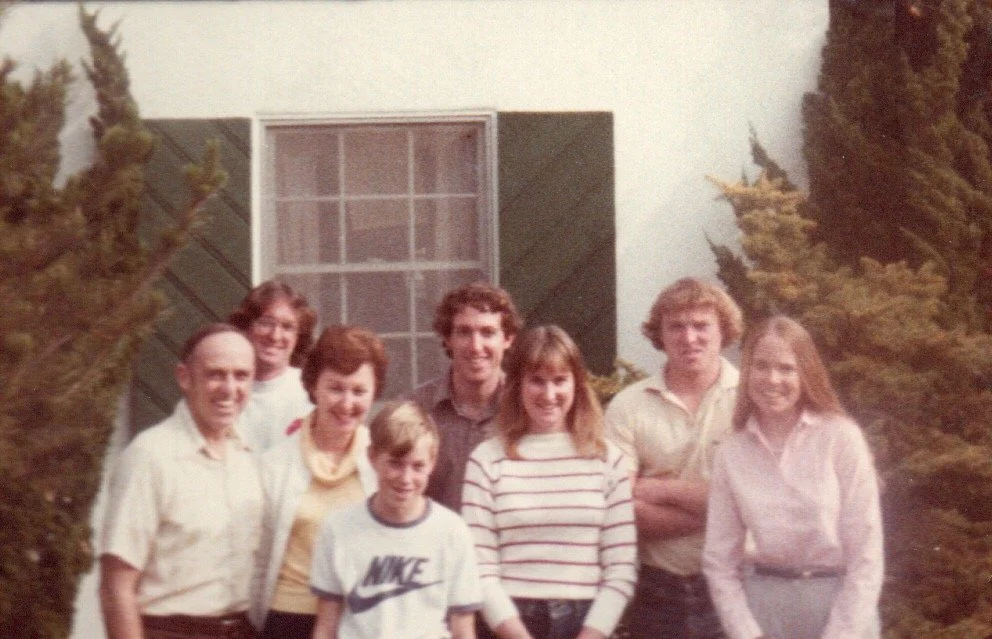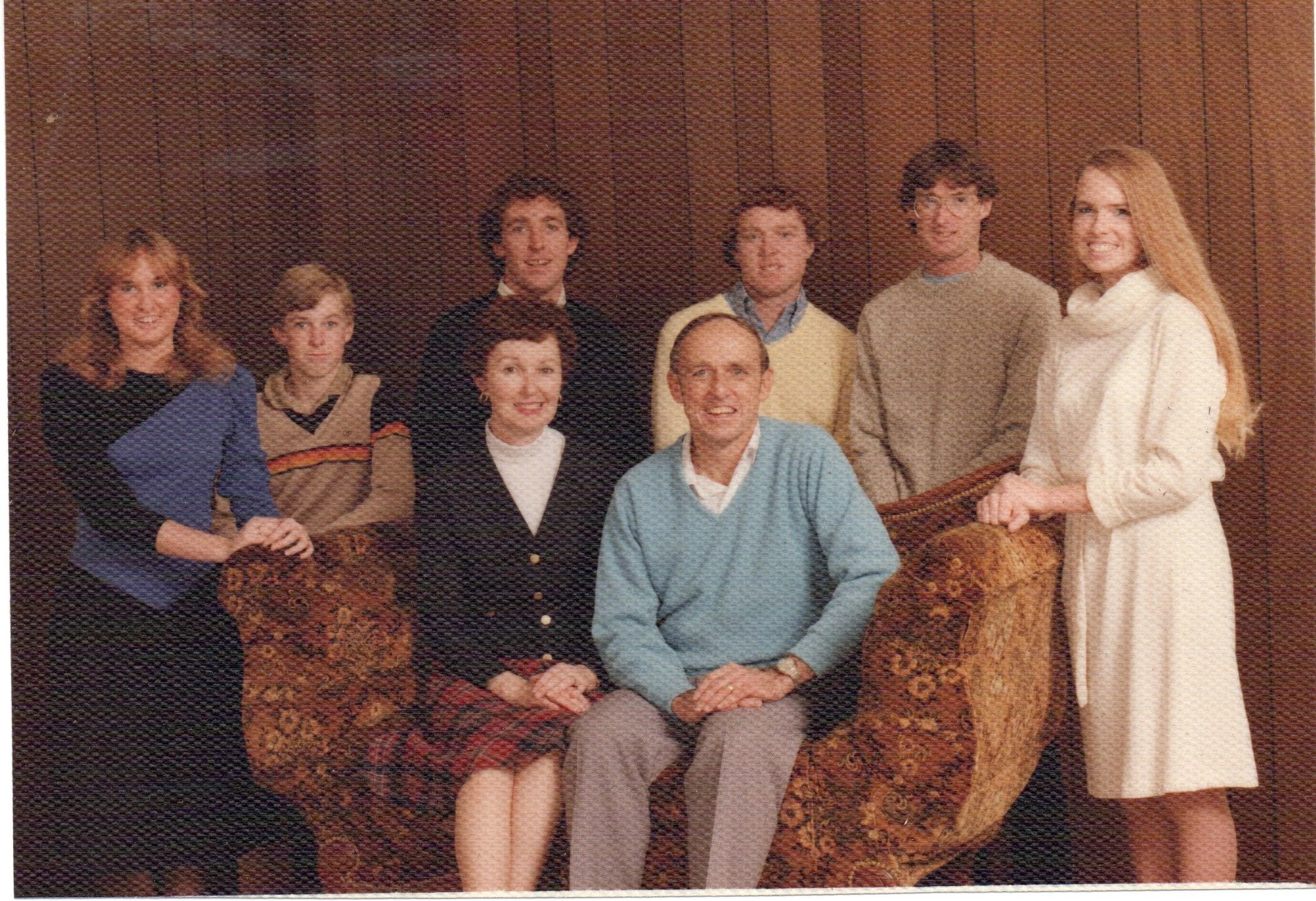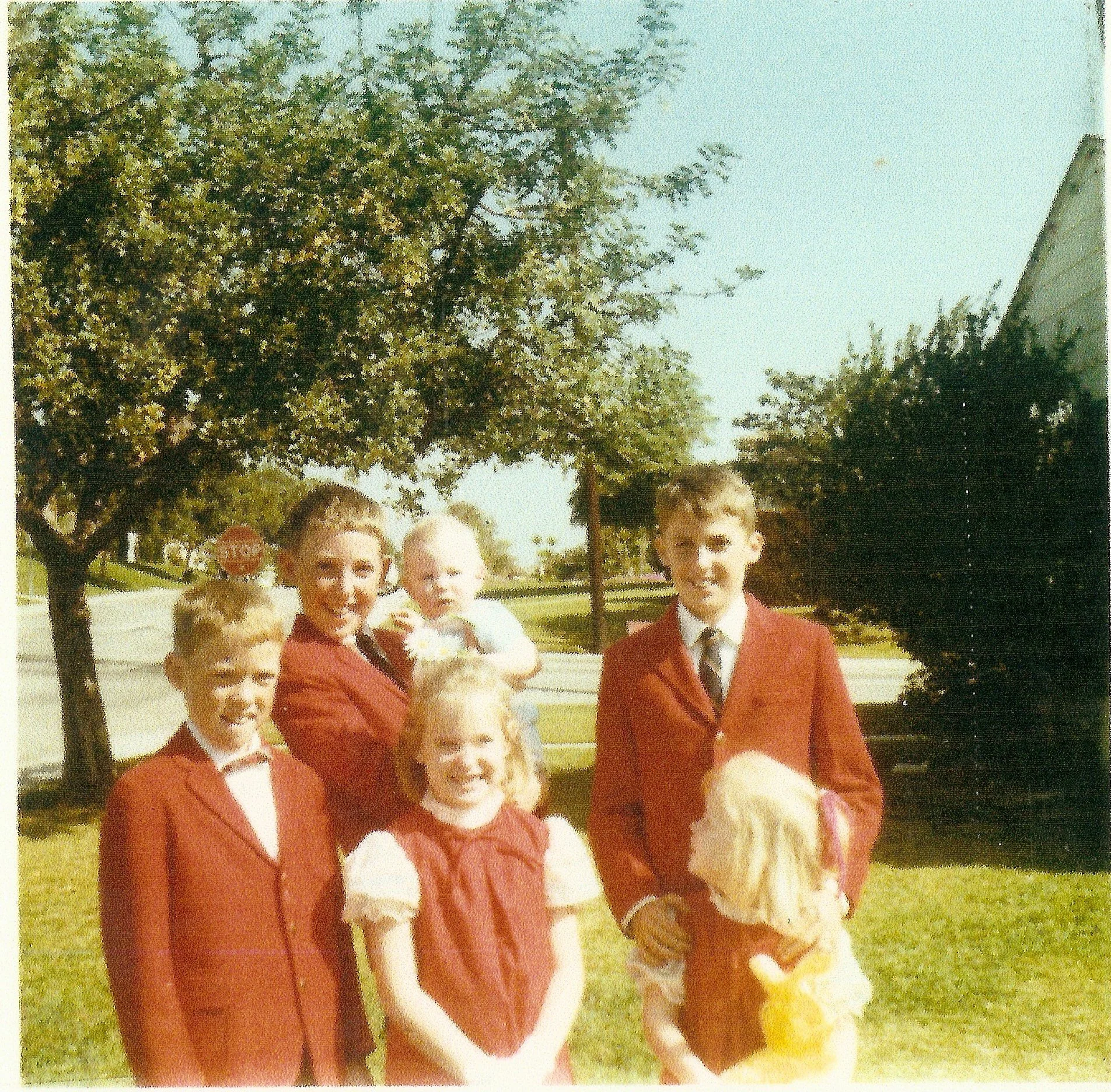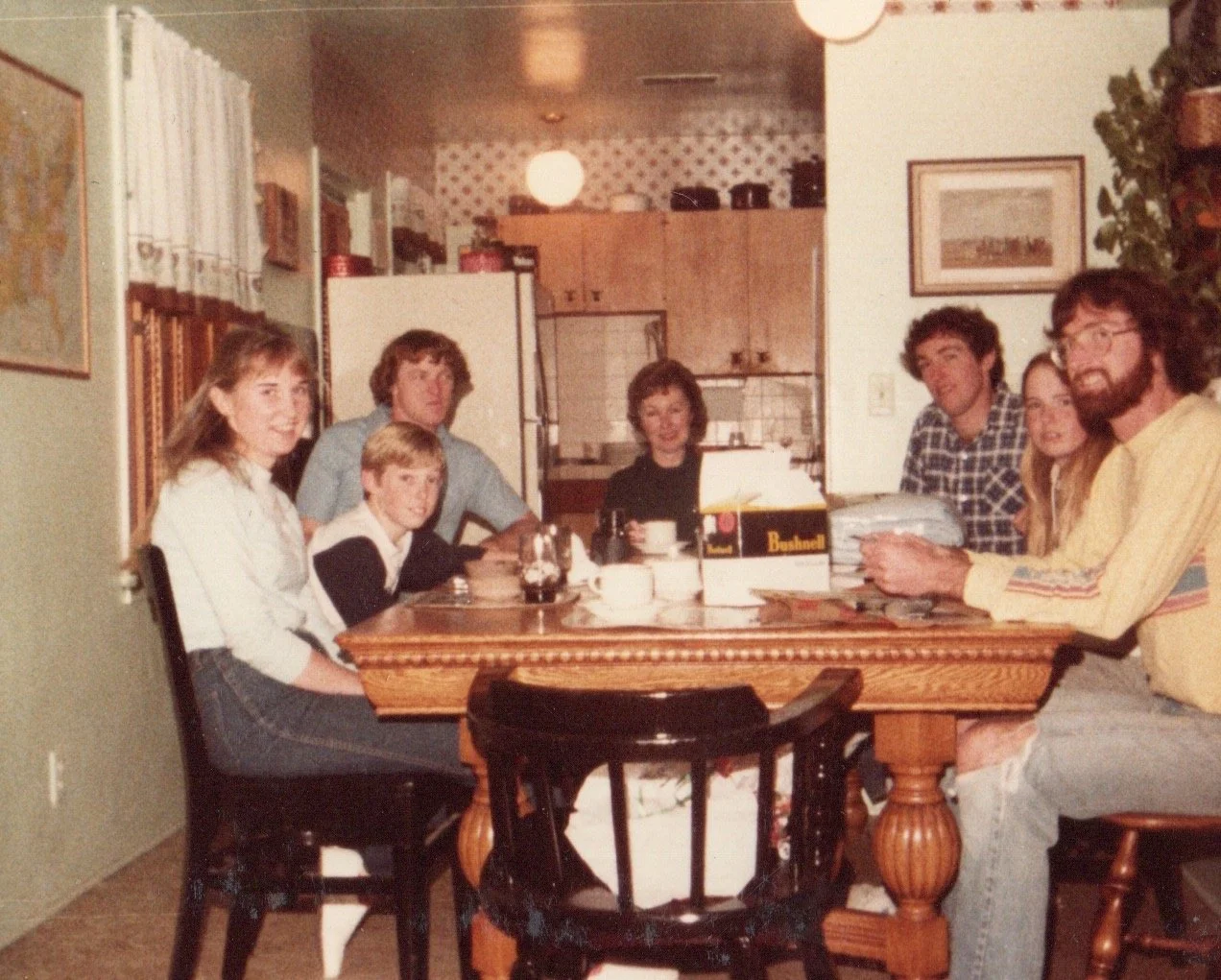This Old House
I knew it was over, or close to it, when I took the clock, which had hung on the living room wall of my parents’ house in El Segundo for over 50 years. We had brought it back from my grandfather’s house in Springfield, Illinois, on one of our cross-country trips, in 1972, and it almost didn’t make it into California. An inspector at the agricultural inspection station outside of Needles thought it might be harboring gypsy moths, which maybe were a bigger concern at the time that whatever pest might’ve been in the plums we brought in from out of state. Dad talked the agent into letting the clock into California, and that was that.
It's an old Seth Thomas schoolroom clock from the 1930’s. Has to be wound every four to five days, with a key – my engineer dad had two keys for it, each marked appropriately. The clock had hung in a classroom at Metheny School in Springfield, where Grandpa Mac, PaMac to us kids, had been principal for many years. It’s definitely a family heirloom-type item. I was quite familiar with it; my bed being on the other side of that living room wall, and I went to sleep every night and woke every morning to the sound of its steady tick-tocking. My dad wound it faithfully, and I cannot remember a time when its pendulum wasn’t swinging.
Other heirloom items arrived from Illinois in the 1970s as well. I remember the day a moving van pulled up to the house and unloaded items that had been in my great-grandmother’s house in Bloomington, Illinois. A huge aircraft carrier deck-sized kitchen table. A hutch for silver and china. A beautiful old bedroom dresser and mirror. Mom was just beside herself at receiving these, from the house she had visited often as a child.
I took the clock a couple months ago because we, the six kids, are divvying up the family heirlooms in advance of cleaning the house out and renting it. Mom passed in 2020 and Dad will not be returning to the house; he’s in a retirement home in Redondo Beach where he is, as I see it, slowly fading, bedridden and incapacitated by a stroke, his engineering mind diminished by dementia. He is content, though, and happy to have a military history book (he owns hundreds) in front of him. But he will not be returning to 758 Bungalow Street.
So the slow dissolution of our childhood home, if not our childhood itself, has begun. We all took items according to how we want to remember our parents and our happy childhood, and as our circumstances would allow. Katie took the bedroom dresser, and our great grandmother’s hand mirror and brush; Nora took the old cowbell, which had called us kids in to dinner, as it once did for my dad’s family in Annapolis, Maryland. Dennis took Dad’s penny jar and one of Dad’s lacrosse sticks; I took the other. I was able to take a few more items, because I live within driving distance. Kate and Dennis each took some of Mom’s Waterford crystal wine glasses, of varied sizes and shapes, collected over the years on their several trips to Ireland. I have almost all the family photo albums and many pictures, which I’m scanning so as to preserve them “for future generations”, as the National Park Service would say. I have Mom and Dad’s china, a wedding present from 1957, because no one else wanted it. I may use it only once a year, but I just couldn’t part with that set with the thistle design, brought out for years of holiday dinners. I also have the bifurcated glass olive bowl (for two types of olives) that came out at Thanksgiving, and the crystal cranberry sauce bowl. Plus the steel hand-cranked meat grinder, bought by my visiting grandfather at an El Segundo hardware store, and used by my dad to make ham salad from leftover Easter ham. It’s far superior for doing that than is my much newer food processor. I also took the brown bean pot used by my mom to “doctor up” canned beans (only B&M would do) for Fourth of July barbecues.
There are specific small items with which I’ll remember Dad: his black, paint-stained hammer from the garage - there was never a time when I didn’t see it on the workbench. His slide rule and ID badge from his (38!) years at the Chevron (nee Standard Oil) refinery in El Segundo, and the transistor radio (that still works!) with which he listened to Dodger games while working in the garden. From my bedroom I could hear the soothing voice of Vin Scully calling the game, outside under my window.
But many items were not taken by any of us, and so are destined either to be sold (for pittance, I suspect) or hauled to the dump by the company which is cleaning out the house. This pains me, but it is just what it is, and I’m trying to accept it. No one wanted the hutch, which dates from the late 1800s, or the silver stored in it.Perhaps what I regret most is that the large kitchen/dining room table, from Mom’s grandmother’s house in Illinois, is going away. I would have taken it but it just doesn’t fit in my house. Katie also considered taking it, and we both regret it’s no longer in a family home.
That table, like those in other kitchens or dining rooms, was the focal point of the home. For much of its life it was our kitchen table, where Dad had his breakfast in the mornings over the front page of the LA. Times, we joining him and pouring over the other sections of the paper. Nightly dinner occurred at that table, exactly at 6 p.m., with Dad leading us in saying grace and then dishing out dinner from the stack of plates in front of him. The first plate was always passed down to Mom at the other end of the table. There was a pink vitamin waiting for each of us at our place setting, and I’m sure that nightly vitamin has by now added years to my life. As the family grew and added spouses and grandchildren, it made more sense to move the large kitchen table to the dining room, where it provided ample space for Sunday and holiday dinners. The bench from Mom’s piano, adjacent to the table, was pressed into service for seating as the gatherings grew larger. In fact, every chair in the house was eventually commandeered for large dinners, and in due course the smaller table in the kitchen became the kids’ table at holiday dinners. Oldest grandkids Colleen and Bridget presided over that table, scene of many games of telephone and other slightly raucous cousin activity.
The house was perhaps a bit odd in its design, and was no doubt added to over time. There were no real dividing walls between the dining room, kitchen, living room and family room, so I guess this was all a “great room” decades before that term and concept became commonplace. The big table and piano were close to the front door, and everyone placed their keys and wallet on top of the piano upon entering the house. That corner, near the front window, was where Dad did his daily calisthenic exercises, as directed by the US. Air Force exercise manual, each morning before we kids got up. If you woke early you could hear him, feel him doing jumping jacks out there. The Christmas tree sat in that corner each holiday season, with its presents covered by a sheet on Christmas morning to foil early-rising kids. Stockings were hung on the metal fireplace screen in the back of the living room, there being no mantel on the decorative rock above the hearth. One rock was the shape of Nevada, another that of Australia. Huge sugar pine cones, from Lake Almanor, sat in a basket by the side of the fireplace, and at Easter See’s eggs were lined up in front of the screen.
Under the front window sat a bookcase, housing the family Bible, Dad’s American Heritage books on the various wars, and a set of 1970s World Book encyclopedias. For a while a ceramic Virgin Mary had pride of place on top of the low bookcase, and (also for a while) we knelt there as a family and recited a nightly Rosary. The Virgin Mary statue was eventually taken out by a ball of some sort (balls were not allowed in the house). Her head was glued back on by Dad, but when it was broken a second time – also by an errant ball - that was it for the Blessed Virgin. And while her demise was likely not the reason we stopped saying nightly rosaries, in my mind, the two things coincided.
The house has a pretty basic color scheme, white with a dark green trim. I think it’s been that way the entire time we’ve been in it. And back in the day, you didn’t pay someone to paint your house; you did it yourself, with the help of your sons. One summer I painted all the green trim on the house, which required some risky work. The house is built on a hill, and the back peak of the roof is easily 30 feet above the backyard below. I had to lean over the edge of the roof to paint the trim there. I tied myself off, inadequately I’m sure, to a nearby standpipe on the roof.
When I was a kid I thought the backyard was huge. It’s not, but it was big enough for full football and wiffleball games, and at one point even had a makeshift high jump pit, made with mattresses. On the left side of the yard was a peach tree, source of peaches which my mom canned, used in peach pies and peach jam. Every July Fourth Dad made peach ice cream with a hand-cranked ice cream freezer – we kids took turn s cranking - and Coley, the family collie (first of five collies my parents had), got to lick the pans. I took to that so much that I planted a peach tree 30 years ago at my Ventura house, found the same model ice cream maker, and make peach ice cream every summer.
So, over fifty Christmases in that house, fifty-plus Thanksgivings. Birthday parties, anniversary parties, and one party that to this day remains somewhat of a mystery. One year on their anniversary Mom and Dad went away for the weekend, probably to Laguna Beach, and my brother decided to host an anniversary party in their absence. He took every piece of art off the walls, and removed all breakable items from shelves. Still, the police showed up (and there is really very little for the police to do in El Segundo; I’m surprised the incident didn’t make the police blotter column in the weekly El Segundo Herald). Aftermath? Repercussions? I don’t know; blessedly, I wasn’t there.
The house surrendered more secrets when we began cleaning it out. Mom passed in 2020 – the funeral Mass was covid-masked – and we hadn’t done a deep dive on her room until recently. Apparently, she kept things. In the garage were two boxes of old letters; she had kept every letter she received from my dad, starting with one in December 1957, written three days after they had met on a blind date. In the boxes were hundreds and hundreds of letters written by my parents to each other, dating from 1953 into the early 1960s. There were other items none of us had ever seen. A photo album from her McFadden family with pictures – tiny, black and white pictures- dating back as far as the early 1900s. My mom as a little girl. There were two tattered scrapbooks Mom had put together in her teens and twenties which contained school pictures and piano recital programs and pretty much every article and program from every dance she attended in high school and college. Turns out she was homecoming queen or prom queen for many of them. One scrapbook had dance programs, football tickets and photos from her dating life with my dad, including receipts and postcards from every restaurant and motel they had frequented on their honeymoon trip to Alabama, where Dad was to complete a military assignment. These letters and scrapbooks represent my parents’ early, formative history, one that we kids had only vague knowledge of. Yes, my parents were young once, too.
Do I place an inordinate value on these things, and this house? Perhaps so, but not necessarily because I can’t let go of the past (which is a charge with some credibility). I prefer to think it’s partly because of the National Park Service mandate and philosophy in which I was steeped during my career in that most righteous of federal agencies: a sense of place, and of history. These are the places, and well, artifacts that remind us of the events that shaped us. In this case, these things remind me of the life my parents created for us in that house. Of the love that drove it.
For over 50 years 758 Bungalow, “Bungalita” to some, was the anchor, the center of our family life. It was where we gathered as a family, where grandkids and collies played on the living room floor. That phase of our family life is over, and we will not gather there again. But we will gather in other places. My sisters still live in El Segundo and host family holiday gatherings. For a dozen years now Dan has organized an annual family stay at Lake Almanor in northern California, where my parents took us in the 1970s, and it has become a family reunion as much as anything else. I appreciate these gatherings ever more, now that a stop at Bungalow is no longer an option.
But fifty years is a pretty good run for anything. I’ll take it. I just hope to hear that cowbell again - maybe calling us in to dinner at Nora’s place.


























